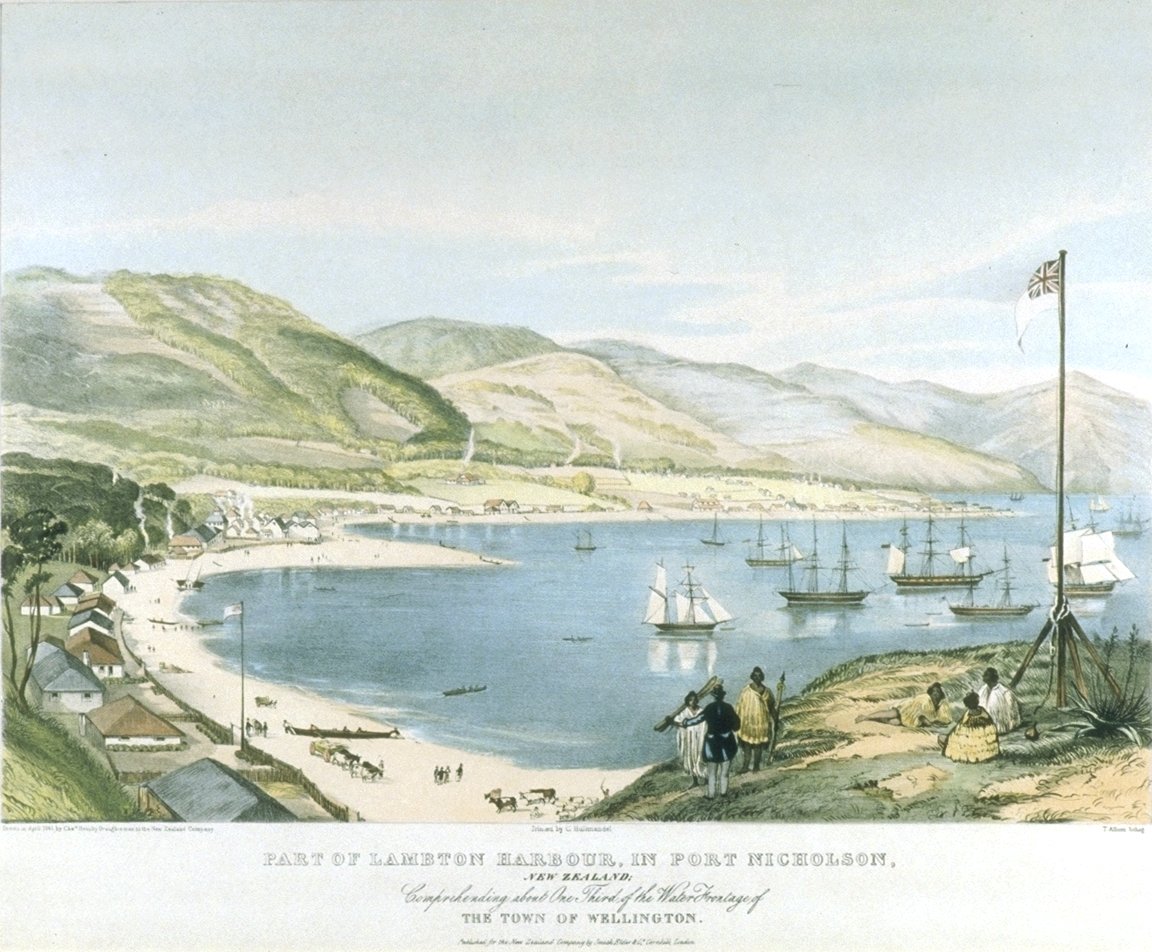Part of Lambton Harbour, in Port Nicholson, New Zealand
Charles Heaphy (c.1820 - 1881)
Thomas Allom (1804 - 1872)
Colour lithograph
April 1841
-
About the work
- Location
-
Country: New Zealand
City: Wellington
Place: British High Commission
This early 19th-century lithograph depicts Wellington Harbour (formerly known as Port Nicholson). The harbour comprises of two large bays, known as Lambton Harbour and Evans Bay. The view is drawn from a location which was then known as Clay Point (now the corner of Lambton Quay and Willis Street).
In 1840 Charles Heaphy was an employee with the New Zealand Company (established in London in 1837 with the aim of systematically colonising New Zealand). In mid-October, Heaphy, returning from a trip back to London, met his friend Frederick Moore in Wellington. The friends built a residence overlooking Lambton Harbour, choosing the site of Clay Point. They constructed the walls from saplings and supplejack, plastered over with clay. The building was facetiously named Clay Point Castle. Outside the castle the friends erected a flagpole, seen to the right of ‘Part of Lambton Harbour’. The original watercolour shows the flag of the United Tribes of New Zealand on the pole. However, in this lithographed version it has been replaced by a Union Jack on a white background. A key to the print was also published, which identifies the buildings around the edge of the bay and the ships moored in the harbour.
-
About the artist
Charles Heaphy was born in London; the son of artist Thomas Heaphy. He worked as a draughtsman for a railway company and attended the Royal Academy Schools, before becoming draughtsman to the New Zealand (NZ) Company. He was sent to NZ as part of an expedition to find suitable sites for settlements and while there, sketched and painted landscapes and people. He returned to England in 1840 to report on progress and lithographs after his works were published in London in 1842. He returned to NZ and later worked for the NZ colonial government. He served as lieutenant, then captain, during the Invasion of Waikato (1863-64). In 1867 he was the first colonial officer awarded the Victoria Cross. After several government posts, he retired in 1881.
Thomas Allom was born in Lambeth; the son of a coachman. He was apprenticed to architect F. Goodwin and studied at the Royal Academy Schools. He was a founder member of the Institute of British Architects (1834) and later a fellow (1860). From 1828 to 1845 he produced some 1500 topographical designs for engravings after sketching tours in England, Scotland, France, Belgium and Turkey. He was also a lithographer and painted architectural perspectives. Allom exhibited at the Society of British Artists and Royal Academy (1824-71). He returned to architecture from 1840 and his designs include Christchurch, Highbury (1847-48), St Peter’s Church, Kensington (1855-57) and the William Brown Library, Liverpool (1857-60). He died in Barnes, aged 68.
-
Explore
- Places
- Cook Strait, New Zealand, Wellington
- Subjects
- wagon, topography, seascape/coastal scene, townscape/cityscape, Victorian Genre, cow, hill, beach, Maori, flag, harbour, house, sailboat, ship
- Materials & Techniques
- lithograph, colour lithograph
-
Details
- Title
- Part of Lambton Harbour, in Port Nicholson, New Zealand
- Date
- April 1841
- Medium
- Colour lithograph
- Acquisition
- Purchased from the Parker Gallery, June 1960
- GAC number
- 5200